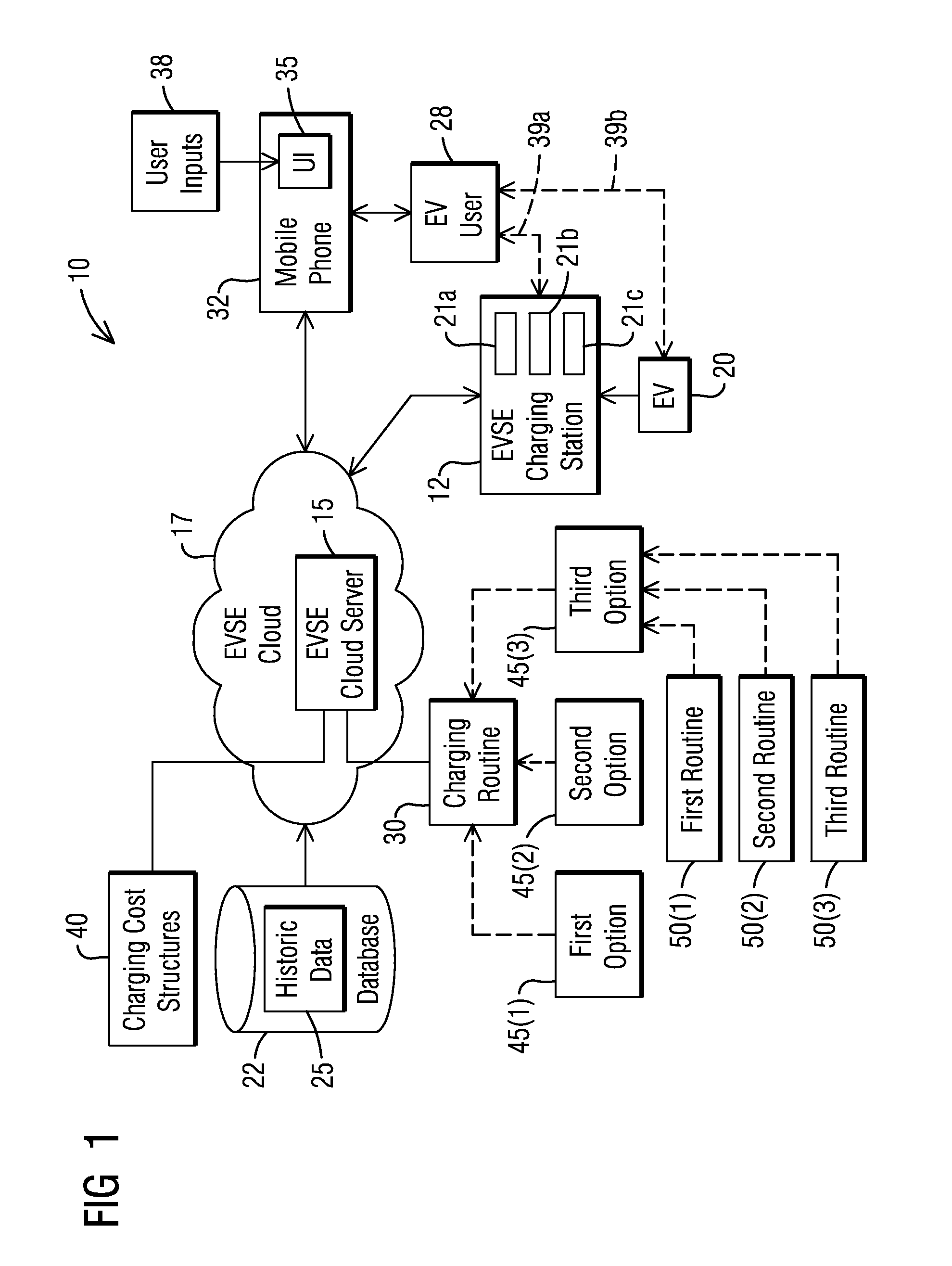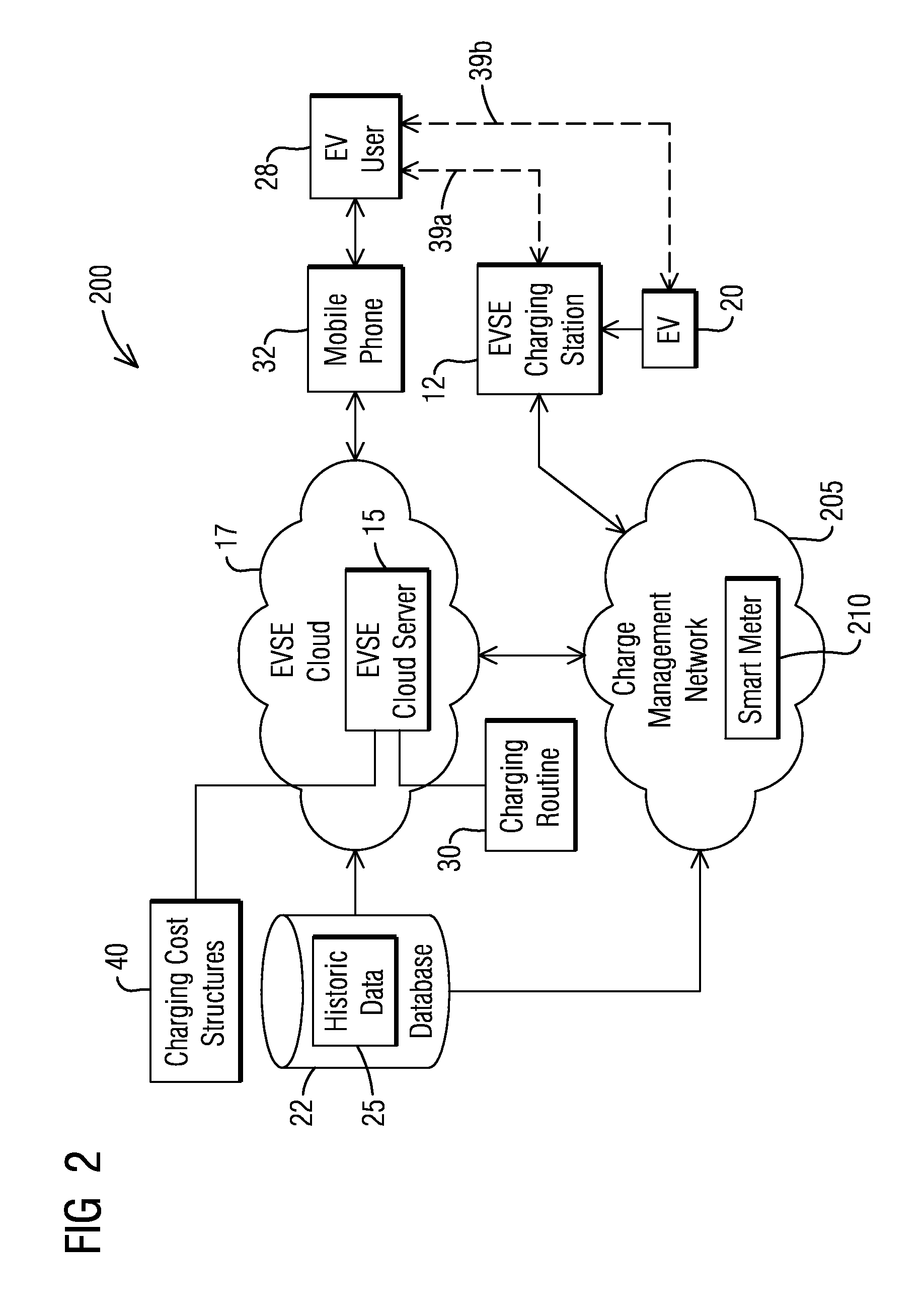Automatically selecting charging routine for an electric vehicle by balancing utility and user considerations
a charging routine and electric vehicle technology, applied in the field of electric vehicles, can solve the problems of grid operators, charging profiles, and most electric vehicles can only go about 100-200 miles before requiring recharging
- Summary
- Abstract
- Description
- Claims
- Application Information
AI Technical Summary
Benefits of technology
Problems solved by technology
Method used
Image
Examples
Embodiment Construction
[0020]To facilitate an understanding of embodiments, principles, and features of the present invention, they are explained hereinafter with reference to implementation in illustrative embodiments. In particular, they are described in the context of being custom learning routines of charging an EV by automatically selecting a charging routine for an EV based on historic data while balancing utility and user considerations in real-time. Embodiments of the present invention, however, are not limited to use in the described devices or methods.
[0021]The components and materials described hereinafter as making up the various embodiments are intended to be illustrative and not restrictive. Many suitable components and materials that would perform the same or a similar function as the materials described herein are intended to be embraced within the scope of embodiments of the present invention.
[0022]Utilizing a networked electric vehicle charger or networked electric vehicle (EV), a digita...
PUM
 Login to View More
Login to View More Abstract
Description
Claims
Application Information
 Login to View More
Login to View More - R&D
- Intellectual Property
- Life Sciences
- Materials
- Tech Scout
- Unparalleled Data Quality
- Higher Quality Content
- 60% Fewer Hallucinations
Browse by: Latest US Patents, China's latest patents, Technical Efficacy Thesaurus, Application Domain, Technology Topic, Popular Technical Reports.
© 2025 PatSnap. All rights reserved.Legal|Privacy policy|Modern Slavery Act Transparency Statement|Sitemap|About US| Contact US: help@patsnap.com



